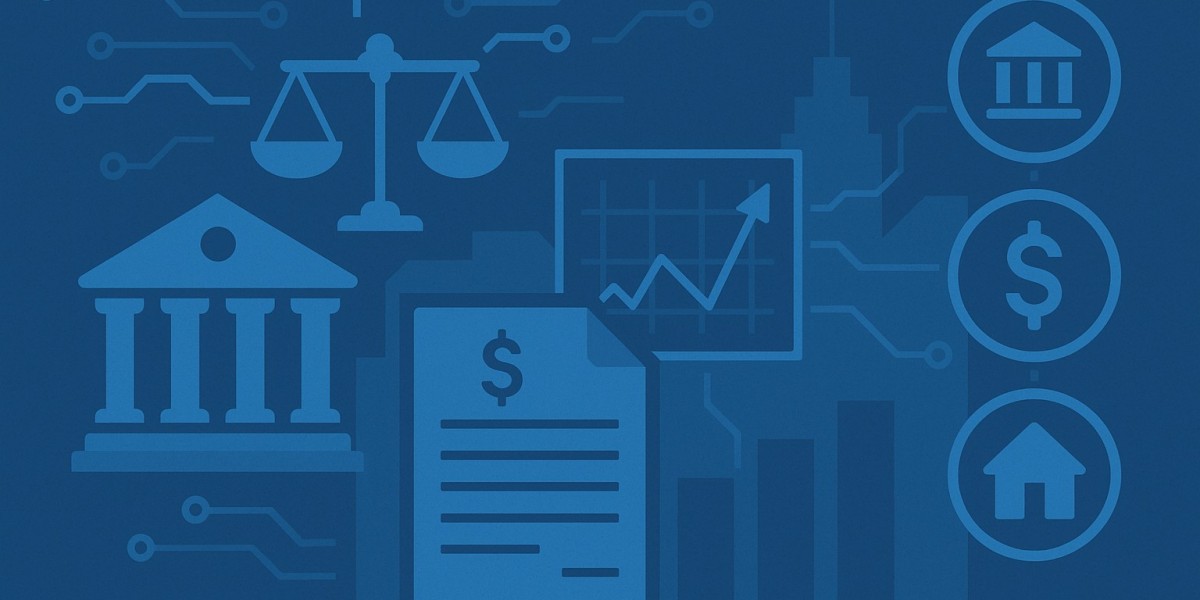The tokenization of real-world assets (RWAs) has emerged as one of the most transformative applications of blockchain technology in recent years. By converting physical and traditionally illiquid assets—such as real estate, commodities, fine art, and even carbon credits—into digital tokens on the blockchain, asset tokenization offers a powerful bridge between the traditional and decentralized financial systems. At the heart of this revolution lies the development platform: the technology stack that powers token creation, management, trading, and compliance.
Real world asset tokenization development platforms provide the foundation upon which institutions, startups, and asset managers can digitize tangible assets, fractionalize ownership, and unlock new levels of liquidity, transparency, and accessibility. In this blog, we explore the core components of these platforms, their value propositions, key use cases, and why they are rapidly becoming essential in the next era of financial and asset innovation.
Understanding Real World Asset Tokenization
At its core, real world asset tokenization involves converting rights to a physical or non-digital asset into a blockchain-based token. These tokens represent ownership or partial ownership of the underlying asset and can be traded on digital platforms just like cryptocurrencies. However, unlike traditional cryptocurrencies, asset-backed tokens are tethered to real, tangible value—bringing security and trust into the equation.
Tokenizing real-world assets is not just a technological innovation; it is a paradigm shift in how value is stored, transferred, and utilized. By leveraging blockchain’s immutability, transparency, and automation, tokenization addresses long-standing issues in asset management, including illiquidity, high entry barriers, and inefficient record-keeping.
Why Development Platforms Are Critical
The process of tokenizing real-world assets is highly complex. It involves multiple layers of technology, regulatory compliance, asset valuation, lifecycle management, smart contract deployment, and often integration with custodians or off-chain systems. This is where tokenization development platforms come into play.
A dedicated platform simplifies this complexity by offering a suite of tools and services for token issuance, smart contract configuration, asset management, KYC/AML integration, investor dashboards, and secondary trading modules. These platforms offer ready-to-deploy frameworks that reduce development time, lower entry barriers, and ensure regulatory alignment—making tokenization scalable and secure.
For both startups and institutional players, choosing a robust tokenization development platform is often the difference between experimental failure and full-scale success.
Core Features of a Tokenization Development Platform
A typical real world asset tokenization platform is built on several key pillars. First is the asset onboarding engine, which allows the system to register and verify the real-world asset being tokenized. This module handles documentation, ownership proof, valuation, and compliance checks.
Next is the token issuance framework, where the smart contracts governing the token are deployed. These contracts define rules related to ownership, transferability, dividend distribution, voting rights, and more. Most platforms support popular standards like ERC-20 for fungible tokens and ERC-721/ERC-1155 for non-fungible or fractionalized ownership.
A robust compliance module is also essential. It integrates KYC (Know Your Customer) and AML (Anti-Money Laundering) processes, and ensures only verified investors can participate. Some platforms also embed legal logic in smart contracts to reflect country-specific regulations, lock-up periods, and investor caps.
An investor dashboard provides a user-friendly interface for asset holders and buyers to interact with the platform. It offers real-time portfolio management, dividend tracking, transaction history, and token transfer features.
Finally, the liquidity layer—either through built-in OTC desks, secondary markets, or integrations with decentralized exchanges—ensures tokens can be traded securely. This democratizes access and enables liquidity in traditionally illiquid asset classes.
Use Cases Across Industries
Real world asset tokenization is not confined to a single domain. It is creating ripple effects across multiple industries, and platforms are tailoring their offerings accordingly.
In real estate, tokenization platforms are being used to fractionalize commercial and residential properties. Investors can now own a share of a high-rise building in New York or a resort in Bali without buying the entire property. This opens up access to global real estate markets, especially for small investors.
In commodities, tokenization enables the digital representation of gold, silver, oil, and agricultural assets. This brings transparency to the supply chain and simplifies ownership transfer without physically moving the asset.
In the art world, ownership of expensive paintings or sculptures can now be distributed among multiple investors using tokens. This not only helps artists and collectors raise funds but also brings liquidity to a traditionally illiquid market.
Other use cases include carbon credit tokenization, intellectual property rights, luxury goods, and financial instruments like bonds and structured products. Each use case requires specialized logic, legal validation, and smart contract structure, which development platforms now streamline efficiently.
Institutional Adoption and Enterprise Needs
Enterprises and institutions are increasingly turning to tokenization platforms as they seek to modernize operations and unlock new revenue streams. Traditional financial institutions, for instance, are leveraging tokenization to bring private equity, venture capital, and real estate investments to the blockchain.
These institutional players demand high levels of security, scalability, and compliance. Tokenization development platforms cater to these needs by offering private blockchain options, customizable governance models, enterprise-grade APIs, and integration with traditional banking systems and custodians.
Many platforms also provide multi-signature wallets, audit logs, role-based access, and automated reporting, ensuring corporate clients can comply with local laws and internal risk controls.
Advantages of Using a Development Platform
Building an in-house tokenization infrastructure is time-consuming, expensive, and requires deep technical and legal expertise. Tokenization platforms, in contrast, provide a plug-and-play solution that accelerates time to market, reduces development cost, and ensures regulatory adherence.
These platforms often offer modular architecture—meaning projects can pick and choose the features they need. Whether it’s white-label token issuance, investor management, or a full-stack tokenization engine, platforms offer scalable paths for growth.
Additionally, most platforms undergo regular security audits and smart contract verification, which adds a layer of assurance for investors. They also maintain compliance libraries that are updated as regulations evolve, minimizing legal exposure for clients.
Technology Stack Behind the Platforms
The underlying tech stack of a tokenization platform typically includes blockchain frameworks (such as Ethereum, Polygon, Avalanche, or private ledgers like Hyperledger Fabric), smart contract libraries, data oracles, and API integration layers.
Smart contracts serve as the logic engine, automating transactions, governance, and distribution. Oracles connect off-chain data (like asset prices, legal updates, or ownership changes) to on-chain contracts. Frontend and backend frameworks, built with tools like React, Node.js, or Django, power investor dashboards and admin panels.
Security tools such as smart contract auditors, penetration testing suites, and anomaly detection are often integrated to ensure that funds and data remain protected at all times. Interoperability layers or bridges may also be included, enabling cross-chain token functionality.
Leading Players in the Space
Several notable tokenization development platforms have emerged as leaders in the space. Platforms like Tokeny, Securitize, Polymesh, Brickken, and tZero have built strong ecosystems around real-world asset tokenization. They offer full-stack infrastructure for issuing and managing asset-backed tokens, along with integrations with exchanges, wallets, and compliance providers.
These platforms are not only helping asset owners tokenize their holdings but are also educating regulators and establishing new market standards. Some, like Securitize, have even obtained licenses to operate as digital transfer agents or broker-dealers—bridging traditional finance and decentralized ecosystems more formally.
Regulatory Considerations
While technology solves many challenges in tokenization, regulation remains a crucial component. Each asset class and jurisdiction comes with specific rules regarding ownership, securities issuance, investor eligibility, and transfer rights.
Development platforms often include compliance-as-a-service modules that localize these legal requirements. They may offer tools for whitelisting investors, enforcing transfer restrictions, and handling taxes or dividends in accordance with national laws.
Projects operating in regulated environments—such as financial institutions or real estate firms—must ensure their tokenization partner can deliver legally enforceable frameworks and documentation. Platforms that collaborate with law firms, regulators, and compliance consultants often have a major advantage in onboarding such clients.
Future Outlook and Strategic Takeaways
As the world moves toward on-chain finance, real world asset tokenization will be a central pillar of this transformation. It offers a win-win for both asset owners and investors: increased liquidity, enhanced transparency, broader access, and lower administrative costs.
For businesses looking to enter the space, choosing the right tokenization development platform is a strategic decision. It influences not only the speed and cost of deployment but also the legal robustness, investor trust, and long-term scalability of the tokenized asset ecosystem.
The key is to align platform capabilities with your specific asset class, investor profile, and jurisdictional needs. Whether you're tokenizing a real estate portfolio, launching a gold-backed token, or enabling a carbon offset trading platform, a trusted, modular, and secure development platform is the foundation for success.






